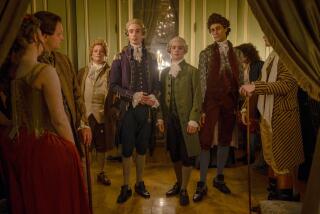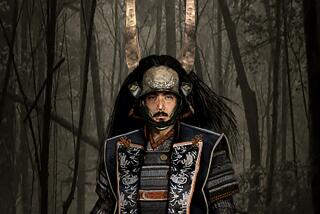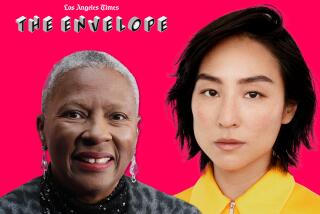French Colonial Wear
THE MOVIE: “The Lover”
THE SCENE: Adaptation of Marguerite Duras’ memoir of her affair as a poor young French schoolgirl (Jane March, pictured) with a rich Chinese man (Tony Leung, pictured) in 1929 in French Colonial Saigon.
THE COSTUME DESIGNER: Yvonne Sassinot de Nesle (“Henry and June”), who was born in Saigon and lives in Paris.
THE LOOK: Spare, but loaded with symbolism. Too broke to afford anything better, the Young Girl wears a uniform by default. There are also too-large hand-me-downs from her mother: a party dress and a pair of dance shoes, leftovers from better times. On one level, the embroidered chemise is so odd and out of place that her insistence on wearing it signifies her desire to escape her social condition. Much too big and cinched with a man’s belt--yet also sexy and somewhat transparent--the chemise makes her look pitiful and alluring at the same time. She is also never without a man’s fedora, beneath which her pigtails dangle.
The custom-made white silk suit worn by the Chinese Man shows he is also caught between worlds. In this era, wealthy Chinese dressed one way, Europeans another. Tropical white was reserved for French colonists who liked it not only because it was cool, but also because it could be easily washed, bleached and sanitized. Wealthy Chinese dressed and lived in a world of colors--blues, gold, blacks and reds. After studying in Paris, the Chinese Man wears a blindingly bright white suit because he wants to assimilate and belong to the future.
It is only at the story’s end--at his wedding--that we see him in a traditional Chinese blue wedding robe fabulously embroidered with symbols such as the moon, the sun and a rainbow.
THE OVERLOOKED: While the two stars wear one outfit apiece throughout the film, the wardrobe department tallied up some 2,000 costumes, including those for the Vietnamese peasants and the participants in an elaborate wedding scene. The wardrobe required a staff of 250--including 15 embroiderers.
QUOTED: “In the book, she’s said to wear golden shoes, but when we made them for her she looked like Daisy Duck or Dorothy in ‘The Wizard of Oz,’ ” said director Jean-Jacques Annaud, explaining why some of the book’s descriptions could not be translated literally to the screen. Instead, the Young Girl’s shoes are black satin embroidered with delicate, golden sequins.
THE RESEARCH: Among the sources were the French Vietnamese Library of Saigon and the Botanical Museum of Saigon. De Nesle also used her family’s personal papers.
THE SOURCES: Every garment was custom-made, most in the production’s workshops in Saigon. The Chinese Man’s suits were made by the French tailor Pierre Betoulle and his shoes by Lobb. The Chinese bride’s wedding robe belonged to De Nesle’s mother. Silks for the Chinese Man’s suit and the wedding party were made in Da Nang.
More to Read
Only good movies
Get the Indie Focus newsletter, Mark Olsen's weekly guide to the world of cinema.
You may occasionally receive promotional content from the Los Angeles Times.










